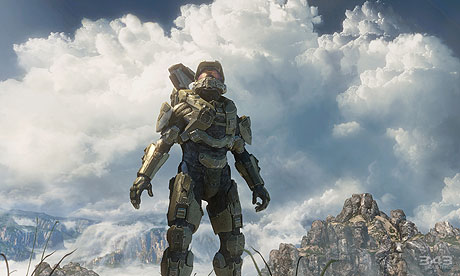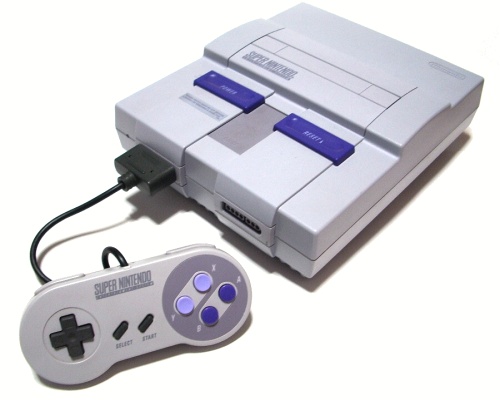So for this blog entry I have been tasked with evaluating
new gaming journalism.
I genuinely didn’t realise how much stress it is for a
magazine journalist. I mean I’ve seen ‘The Devil Wears Prada’ and ‘Ugly Betty’,
they are always stressed and running about, but I thought it was a
dramatisation to make good television. After reading Kieron Gillen's manifestos
I see that the programmes are not so farfetched.
 |
| Good o'l ugly betty |
Kieron Gillen states that within the workplace an average
magazine is written within 20 or so days. This doesn’t offer a lot of time for
the reviewers to coherently write reviews. He also states that “We’re not
perfect, because we haven’t time to be perfect.” I think that’s rubbish. Less time
to write a game review would surely mean that what is written doesn’t make
sense. But it does, the copy make sense, however the reviews seem to follow a
pattern. Big up the games that invest a lot of money into marketing, mediocre review
everything else.
Gillen used to work for pc gamer, its still a cool magazine and starcraft 2 is an epic game.
Granted there isn’t some formula you can apply to all
reviews that show this pattern and there are always exceptions to the rule. But
generally from my personal perspective that’s how reviews are going. For example
the classic big up is Call of Duty (Sorryyy I know I know I’ll leave it alone. Eventually)
that game hasn’t changed much since Call of Duty modern warfare. Granted they
changed the packaging and made it a bit shinier but the core of the game is the
same. Yet every single gaming review gives it a high rating. Why? Because that
bad boy pumps so much money into marketing. Think about it. They had the
biggest entertainment launch in history with modern warfare 2. They have actual
actors for voices in game and fully fledged over the top action adverts on television.
Halo 4 is a magnificent game which I
love dearly but that game doesn’t get off scot free either, there marketing
budget alone was an estimated $30 million. That’s a lot of money man.
We're at war but i gott'a look cool. You gott'a look cool.
Now I don’t know
how much Brink’s marketing budget was but contrast that games success with the
previous two and I bet it wasn’t as much. The game didn’t sell all that well
and It got mediocre reviews. I think the game was an interesting idea and actual
fun to play.But in its infancy it had flaws.What killed it is that too many people were sceptical about it and
couldn’t adapt to game play that wasn’t call of duty based. That plus when a
game gets a review of 5 or 6, it means gamers on the fence lose interest. Despite
5 being a halfway point of 10. People just don’t look for ok. One of the
concept artist’s that came in to talk to us said “people have become hooked on
hyper reality, HDTV’s and lens flares” and that sums up what I’m saying really.
Once the audience has been exposed to ‘awesome’ they don’t really care for
anything else.
This is reflected in how reviewers review games. At the
end of the day the boss is paying the reviewers wage. To pay wages you need
money. To get money you need to results. In order to get results you need to
know what’s selling. And what’s selling are the games everyone is talking
about. Online magazines also cover everything that printed magazines cover without
things like cost of print. That cost is money, the boss needs to justify that
spend otherwise they’ll start cutting jobs to save costs. If we chuck that back
into the cycle you can see where I’m going with it.
Edge magazine is a fairly regular purchase of mine.
This is why I think new game
journalism is a little biased. Ultimately editors will be looking to keep their
jobs. To do that they need to have their magazines sell and make the boss
happy. To do that, they need to encourage people with reasons to buy the
magazine like exclusive content. That cycle probably, adjusts; reviews to
entice games to allow the exclusive accessibility. I could be completely wrong;
I have no actual experience inside a publishing organisation so my opinion is
from the outside looking in as opposed to inside speaking out. Maybe it’s easier
to speak about something being biased when you have no idea what it’s like?
To be honest I don’t really want to
know what it’s like. I’m not a huge fan of writing. I prefer the language of
tone and form. And I think it’s
difficult to be objective about something that is subjective. A review is a
personal experience. When I play Halo 4 the experience is different, my Spartan
is different. But there are certain key elements of wow or disappointment that
resonate with other players. Finding those details must be hard as u become
drawn between fact and opinion. The number 9.8 out of 10 is a fact yet the
reasoning behind it is effectively an opinion. If in my opinion Halo is rubbish
and I rate it a 4 it can’t just so happen that all other game reviewers rate it
low, or can it? I mean game reviewers must look at each other’s reviews and
think hmm, should we change ours a little. Or if an editor thinks a game is brilliant,
he’ll tell all his other editor buddies at different magazines. Thus fudging the
figures slightly.
So that concludes my thought on new
games journalism.
Thanks for reading my rambling.



.jpg)















.jpg)




